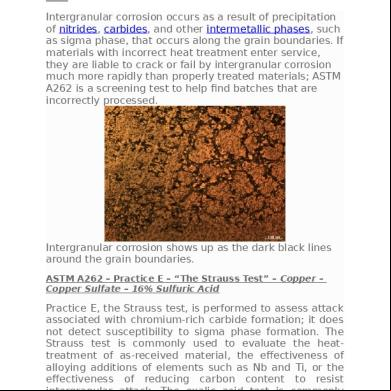Aircraft Types.ppt 4o1x5i
This document was ed by and they confirmed that they have the permission to share it. If you are author or own the copyright of this book, please report to us by using this report form. Report 2z6p3t
Overview 5o1f4z
& View Aircraft Types.ppt as PDF for free.
More details 6z3438
- Words: 480
- Pages: 23
AIR CRAFT CHARECTERSATICS
Types of airplane and their uses Commercial airplane
enger/ Cargo Aircraft Airbus A380
Types of airplane and their uses Military
Military airplane
Refueling an airplane in mid-air
Northrop B-2 Stealth Bomber
Black Widow World’s Smallest Spy Aircraft
Private Aircraft
Crop Spraying
Medical Evacuations
Types of airplane and their uses
Experimental aircraft
Major Parts of Airplane
EMPENNA GE
FUSELAGE WING
ENGINE
Parts of an Airplane Fuselage: Basic structure of the airplane to which wings, empennage and landing gear are attached. It is designed to hold engers, crews & cargo.
Parts of an Airplane Empennage (tail): Consists of vertical stabilizer & horizontal stabilizer. It provides the greatest stabilizing influence of all the components of an airplane.
Parts of an Airplane Engine: Provides the thrust necessary for powered flight. The types of engine depends on the mission requirements of the airplane.
Parts of an Airplane Wing The wing is an airfoil attached to the fuselage and is designed to produce lift. It may contain fuel cells, engine nacelles and landing gear. Airplane control surfaces (aileron, flaps, slat and spoiler) also attached it.
Wing High Wing: Wing
on top (very stable) Mid Wing: Wing in middle (acrobatic) Low Wing: Wing on bottom (less drag)
Parts of an Airplane Landing gear : The landing gear can be fixed in place or retractable. Most planes today use what is called a tricycle landing gear arrangement. This system has two large main gear units located near the middle of the plane and a single smaller nose gear unit near the nose of the aircraft.
Cock pit
Parts of an Airplane- Cabin
Elevator Rudder
Primary Control Surfaces Ailerons: horizontal surfaces located on wing
tips. Provide roll control- Roll the aircraft to the right or left. Elevator: horizontal surface located on the tail Provide pitch control-Nosing the aircraft up and down. Rudder: vertical surface located on the tail Provide yaw control- turning the aircraft to the left or right.
Additional Control Surfaces Flaps: A movable control surface on the aircraft wing, used to change the amount of lift generated. Flaps deflect downward during take-off & landing to increase lift. Flaps retracted immediately after landing to decrease lift. Slats: A movable control surface on the aircraft wing, also used to change the amount of lift generated. Slats enable the airplane to get off the ground quickly and to land more slowly.
Additional Control Surfaces Spoilers: Located on the upper wing which, when opened, decreases lift and increases drag. They reduce lift by disrupting the airflow over the top of the wing. They are used during the descend prior to landing and immediately after landing. Spoiler
Basic Aircraft
4 Forces acted on an airplane
How do aeroplanes fly
Types of airplane and their uses Commercial airplane
enger/ Cargo Aircraft Airbus A380
Types of airplane and their uses Military
Military airplane
Refueling an airplane in mid-air
Northrop B-2 Stealth Bomber
Black Widow World’s Smallest Spy Aircraft
Private Aircraft
Crop Spraying
Medical Evacuations
Types of airplane and their uses
Experimental aircraft
Major Parts of Airplane
EMPENNA GE
FUSELAGE WING
ENGINE
Parts of an Airplane Fuselage: Basic structure of the airplane to which wings, empennage and landing gear are attached. It is designed to hold engers, crews & cargo.
Parts of an Airplane Empennage (tail): Consists of vertical stabilizer & horizontal stabilizer. It provides the greatest stabilizing influence of all the components of an airplane.
Parts of an Airplane Engine: Provides the thrust necessary for powered flight. The types of engine depends on the mission requirements of the airplane.
Parts of an Airplane Wing The wing is an airfoil attached to the fuselage and is designed to produce lift. It may contain fuel cells, engine nacelles and landing gear. Airplane control surfaces (aileron, flaps, slat and spoiler) also attached it.
Wing High Wing: Wing
on top (very stable) Mid Wing: Wing in middle (acrobatic) Low Wing: Wing on bottom (less drag)
Parts of an Airplane Landing gear : The landing gear can be fixed in place or retractable. Most planes today use what is called a tricycle landing gear arrangement. This system has two large main gear units located near the middle of the plane and a single smaller nose gear unit near the nose of the aircraft.
Cock pit
Parts of an Airplane- Cabin
Elevator Rudder
Primary Control Surfaces Ailerons: horizontal surfaces located on wing
tips. Provide roll control- Roll the aircraft to the right or left. Elevator: horizontal surface located on the tail Provide pitch control-Nosing the aircraft up and down. Rudder: vertical surface located on the tail Provide yaw control- turning the aircraft to the left or right.
Additional Control Surfaces Flaps: A movable control surface on the aircraft wing, used to change the amount of lift generated. Flaps deflect downward during take-off & landing to increase lift. Flaps retracted immediately after landing to decrease lift. Slats: A movable control surface on the aircraft wing, also used to change the amount of lift generated. Slats enable the airplane to get off the ground quickly and to land more slowly.
Additional Control Surfaces Spoilers: Located on the upper wing which, when opened, decreases lift and increases drag. They reduce lift by disrupting the airflow over the top of the wing. They are used during the descend prior to landing and immediately after landing. Spoiler
Basic Aircraft
4 Forces acted on an airplane
How do aeroplanes fly










